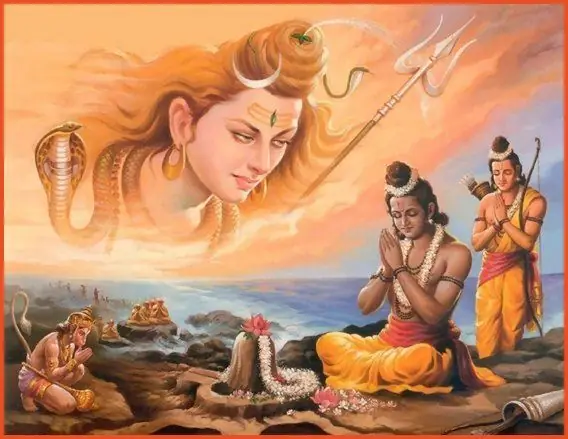Sanskrit in translation means "enriched", "pure", "sanctified". It is called the language of the gods. The ancient Indian texts about the Vedic gods were written in this language and gained fame all over the world. The ancient Indian language Sanskrit is based on the Devanagari alphabet, which also formed the basis of modern Hindi, Marathi and other languages.
Indian Literature
Literature of India is a huge ancient layer of Indian history. Original, with great authority, it served as a source of ideas for a huge part of literature as a whole. Indian literature can be divided into three major periods:
- Vedic (approximately before 2nd century BC),
- epic period, transitional (before 4th century AD),
- classic (to date).
Ancient Indian Vedic Literature
In India, 2 significant types of stories are recognized in religious literature:
- shruti (translated as "heard"), revealed as a resultrevelations of a deity;
- smriti (translated as "memory"), invented by man and having less significance.

Vedic texts consist of shrutis and a small number of smritis. The most important and ancient Veda is the Rigveda (veda of hymns), which contains 1028 hymns. They were performed during rituals to the gods. The main content is the praise of the gods and appeal to them with prayers.
Another ancient philosophy in India is the Upanishads. In them, in a relaxed manner in the form of stories, riddles or dialogues, deep ideas are revealed that later formed the basis of philosophical teachings and had a huge impact on religions (Buddhism, Hinduism, Jainism).
Epic literature and ancient Indian language of Asia
The language of late Vedic literature is significantly different from the archaic language of the Rigveda and is close to classical Sanskrit. The two largest and most famous epics in Sanskrit take stories from the Vedas, where they were presented in a concise version.
"Mahabharata" and "Ramayana" are the largest epics written in the ancient Indian language. They had a huge impact on medieval and modern Hinduism and are classics of Sanskrit literature. Classical Sanskrit is subject to the rules laid down by grammarians led by Panini as early as the 4th century. BC e. The language, embellished with complex stylistic turns, was used by Sanskrit poets, authors of philosophical treatises, playwrights.

Old Indian refers toearly representatives of the Indo-European family of languages. Close to ancient Iranian. In the history of the development of the language, the Vedic period is distinguished, later Sanskrit was born on its basis.
Old Indian Sanskrit
Sanskrit is widespread in the countries of Southeast and Central Asia. Used in India as the language of religion, science and philosophy, it is the source of modern Indo-Aryan and Dravidian languages. The ancient Indian language Sanskrit was not a predecessor of the Middle Indian languages, but developed in parallel with them. It is similar to Latin in the Middle Ages, used more as a language of religion.
For a long time, Sanskrit was the official language of India. This is a well-established literary language, where the rules are honed to perfection. In terms of structure, it is an ancient Indian language, which was formed in the Middle Indian period and has retained its structural series to the present.

The grammatical structure of the language contains a rich composition of word changes: 8 cases, 6 moods, 3 voices, 2 main conjugations and 10 verb classes, hundreds of verb forms, 3 numbers in names (singular, plural and dual). In terms of expressive abilities, it is many times superior to all modern languages.
The Sanskrit vocabulary is extremely rich, contains a large number of synonyms. Another distinctive feature is the use of complex words. Spoken language has a more simplified form and has fewer means of expression. Of all the languages in the world, Sanskrit has the mostlarge vocabulary, while allowing you to make a sentence with the minimum required number of words.
Sanskrit in the modern world
As noted by linguists studying the ancient Indian language Sanskrit, it is a perfect language, ideal for expressing the finest nuances of thought. That is why it is called the language of nature, the language of consciousness.
In India, Sanskrit is considered the language of the gods, so the one who knows this language approaches the gods. It is believed that the sounds of Sanskrit are in natural harmony with nature and the vibrations of the cosmos, therefore, even simply listening to texts in this ancient Indian language has a beneficial effect on a person and helps in spiritual development. All mantras that are used during yoga asanas are recited in Sanskrit.

It has been scientifically proven that the phonetics of the ancient Indian language has a connection with the energy centers of the human body, so the pronunciation of words in this language stimulates them, increasing energy and resistance to disease, and relieves stress. It is also the only language where all of the nerve endings in the tongue are activated when spoken, which improves overall circulation and brain function.
Universities for the study of Sanskrit exist in 17 countries around the world. It has been scientifically proven that learning this language improves brain activity and memory. Therefore, in many European schools, the study of Sanskrit began to be introduced as a compulsory subject of the program. Sanskrit is the only language in the world that has existed for millions of years. This language had a director indirect influence on 97% of all languages of the planet.






